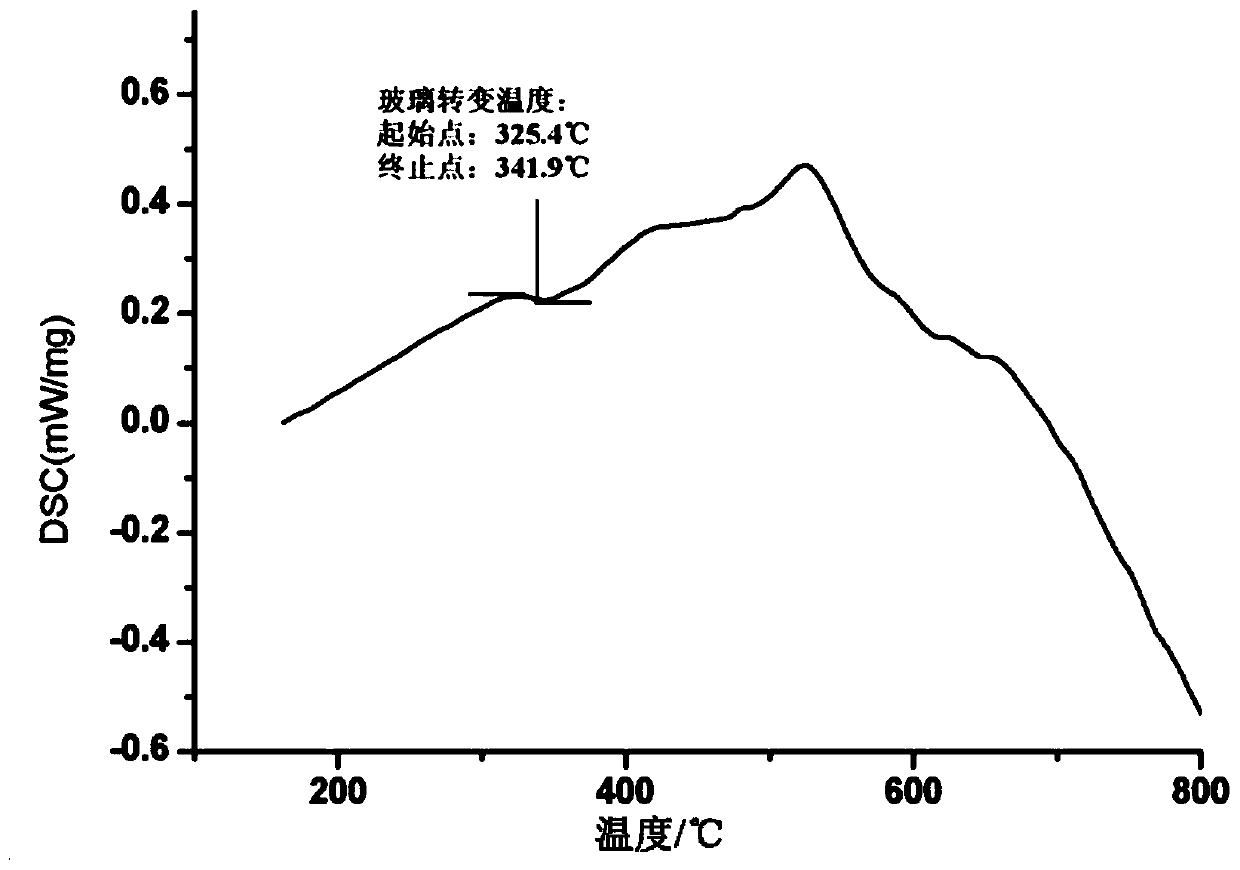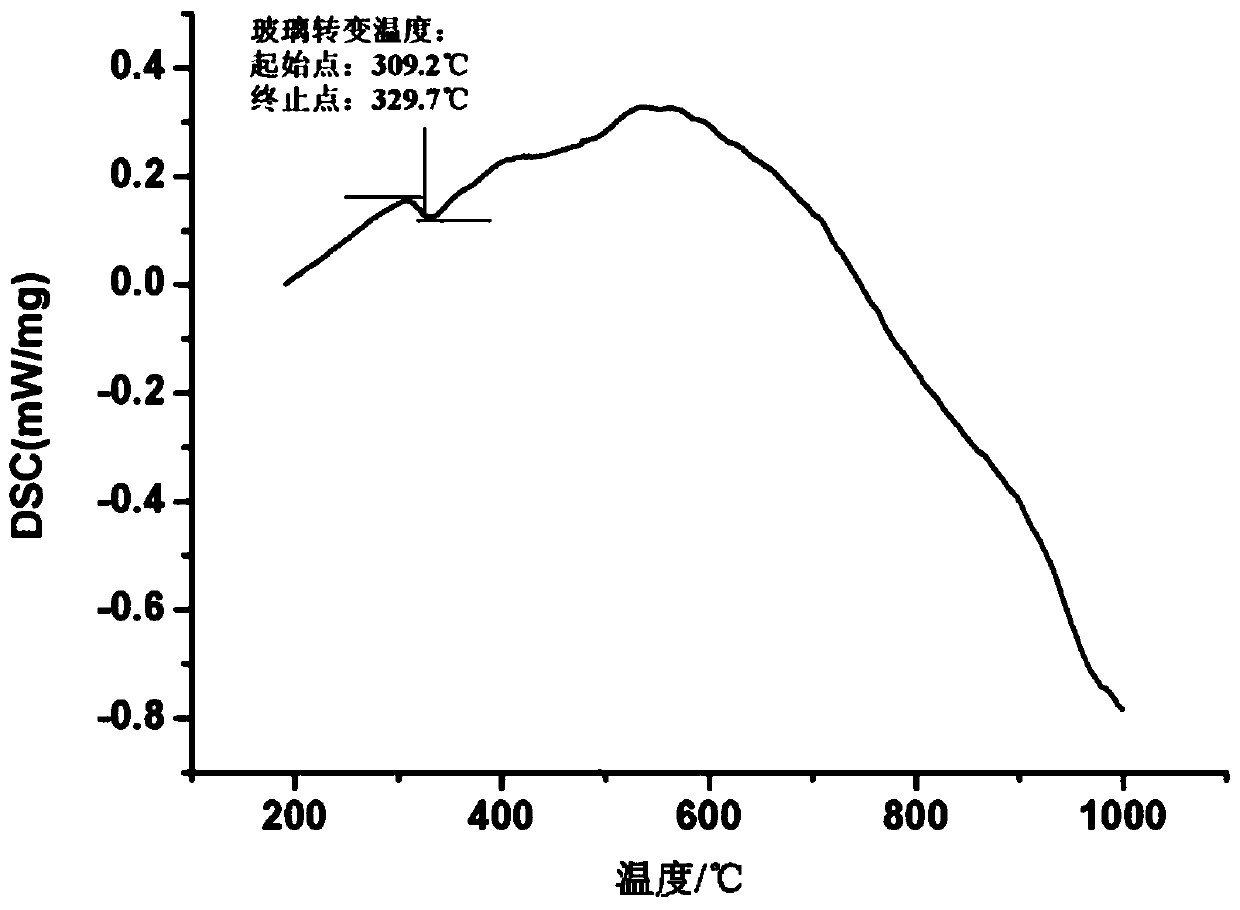A kind of low-melting-point glass powder for vacuum glass sealing and anodic bonding enhanced packaging method thereof
A low-melting glass and anodic bonding technology is applied in the application of anodic bonding enhanced encapsulation method and the preparation of low-melting glass powder for vacuum glass sealing, which can solve the problem of high working temperature, achieve low working temperature and reduce production. cost, the effect of improving the sealing strength
- Summary
- Abstract
- Description
- Claims
- Application Information
AI Technical Summary
Problems solved by technology
Method used
Image
Examples
Embodiment 1
[0043] A low-melting-point glass frit for vacuum glass sealing and an anodic bonding enhanced sealing method thereof, comprising laminating a glass substrate provided with a low-melting-point glass coating on the surface with another glass substrate of vacuum glass for anodic bonding package, in which the thermal expansion coefficient of the low melting point glass coating matches the glass substrate; the specific packaging steps are as follows:
[0044] 1) Low melting point glass powder ingredients
[0045] Weigh the basic glass raw material by mass percentage: V 2 o 5 70%, P 2 o 5 19%, TeO 2 5%, B 2 o 3 2%, ZnO 1.5%, Na 2 O is 2.5%, and the raw materials weighed are fully mixed to make a mixture.
[0046]
[0047] 2) Preparation of low melting point glass powder
[0048] The obtained glass batches were heated up to 1200°C at a rate of 3-5°C / min, and then held for 2 hours; then poured into a graphite mold for molding, and annealed at 330°C for 1 hour, and the prep...
Embodiment 2
[0056] A low-melting-point glass frit for vacuum glass sealing and an anodic bonding enhanced sealing method thereof, comprising laminating a glass substrate provided with a low-melting-point glass coating on the surface with another glass substrate of vacuum glass for anodic bonding package, in which the thermal expansion coefficient of the low melting point glass coating matches the glass substrate; the specific packaging steps are as follows:
[0057] 1) Low melting point glass powder ingredients
[0058] Weigh the basic glass raw material by mass percentage: V 2 o 5 64%, P 2 o 5 25%, TeO 2 5%, B 2 o 3 2%, ZnO 1.5%, Na 2 O is 2.5%, and the raw materials weighed are fully mixed to make a mixture.
[0059]
[0060] 2) Preparation of low melting point glass powder
[0061] The obtained glass batches were heated up to 1200°C at a rate of 3-5°C / min, and then held for 2 hours; then poured into a graphite mold for molding, and annealed at 330°C for 1 hour, and the prep...
Embodiment 3
[0069] A low-melting-point glass frit for vacuum glass sealing and an anodic bonding enhanced sealing method thereof, comprising laminating a glass substrate provided with a low-melting-point glass coating on the surface with another glass substrate of vacuum glass for anodic bonding package, in which the thermal expansion coefficient of the low melting point glass coating matches the glass substrate; the specific packaging steps are as follows:
[0070] 1) Low melting point glass powder ingredients
[0071] Weigh the basic glass raw material by mass percentage: V 2 o 5 59%, P 2 o 5 25%, TeO 2 5%, B 2 o 3 2%, ZnO 6.5%, Na 2 O is 2.5%, and the raw materials weighed are fully mixed to make a mixture.
[0072]
[0073] 2) Preparation of low melting point glass powder
[0074] The obtained glass batches were heated up to 1200°C at a rate of 3-5°C / min, and then kept for 2 hours; then poured into a graphite mold for molding, and annealed at 330°C for 1 hour, and the prep...
PUM
| Property | Measurement | Unit |
|---|---|---|
| glass transition temperature | aaaaa | aaaaa |
| softening point | aaaaa | aaaaa |
| softening point | aaaaa | aaaaa |
Abstract
Description
Claims
Application Information
 Login to View More
Login to View More - R&D Engineer
- R&D Manager
- IP Professional
- Industry Leading Data Capabilities
- Powerful AI technology
- Patent DNA Extraction
Browse by: Latest US Patents, China's latest patents, Technical Efficacy Thesaurus, Application Domain, Technology Topic, Popular Technical Reports.
© 2024 PatSnap. All rights reserved.Legal|Privacy policy|Modern Slavery Act Transparency Statement|Sitemap|About US| Contact US: help@patsnap.com










